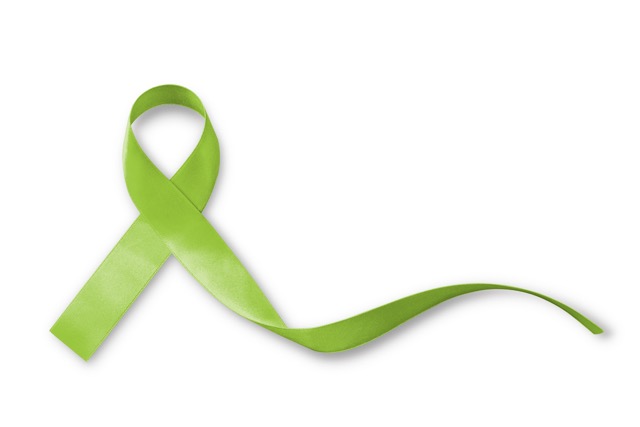
Communication Strategies for Muscular Dystrophy: Michael’s Story
By Burke M.A. CCC-SLP
In 1984, during my time at a rehabilitation center in New Jersey, I encountered a remarkable patient named Michael. At 35 years old, he was living with advanced muscular dystrophy. His condition had taken away his ability to walk, severely limited his arm and hand function, and caused his vision to deteriorate. Despite these physical limitations, Michael retained his sharp mind, his sense of humor, and a deep desire for human connection. Throughout our time together, I learned invaluable lessons about communication strategies for muscular dystrophy—both verbal and non-verbal—and how speech therapy can help preserve the essence of a person when traditional methods of communication are no longer an option.
- Communication Strategies for Muscular Dystrophy: Michael’s Story
- Understanding Muscular Dystrophy and Communication Challenges
- The Role of Non-Verbal Communication in Muscular Dystrophy
- A Memorable Session: Humor as a Therapeutic Tool
Understanding Muscular Dystrophy and Communication Challenges
Muscular dystrophy (MD) is a group of genetic disorders characterized by progressive muscle weakness and loss of muscle mass. The various types of muscular dystrophy, such as Duchenne Muscular Dystrophy (DMD), Becker Muscular Dystrophy, and Myotonic Muscular Dystrophy, affect individuals differently in terms of when and how communication challenges arise. For instance, Duchenne often manifests in early childhood, leading to speech difficulties as the disease progresses, while Myotonic Muscular Dystrophy may not impact speech until adulthood.
In Michael’s case, his muscular dystrophy severely impacted his ability to speak and use his hands, creating significant barriers to communication. His facial muscles weakened, making articulation difficult, and his limited motor control meant that traditional augmentative communication methods were not practical.
However, communication challenges in muscular dystrophy are not limited to speech alone. Weak respiratory muscles can reduce vocal intensity, limiting how long a person can speak without getting tired. In addition, some individuals lose the ability to control hand or arm movements, making it difficult to write or use assistive communication devices. As a result, non-verbal communication—facial expressions, head movements, and eye gaze—often becomes essential.
Michael’s First Session: Recognizing Potential Beyond the Condition
When I first evaluated Michael, it was clear that he was fully aware of his surroundings and engaged with the world. He responded to my initial YES-NO questions using subtle head movements and facial expressions, demonstrating his cognitive sharpness and willingness to communicate despite his physical limitations.
However, in 1984, the technology for augmentative communication devices was still in its infancy. Devices that could generate speech or allow individuals with motor difficulties to communicate more effectively were far less sophisticated than what we have today. Michael’s case required creativity, patience, and a willingness to adapt our therapeutic approach to his specific abilities.
The Role of Non-Verbal Communication in Muscular Dystrophy
For Michael, non-verbal communication became the cornerstone of our therapy. Individuals with advanced muscular dystrophy often rely heavily on non-verbal cues to express themselves, especially when speech is no longer an option. In Michael’s case, his communication methods included:
- Facial expressions: A smile, frown, or raised eyebrow could convey agreement, frustration, or humor.
- Vocalizations: Although not fully formed words, his vocalizations expressed satisfaction, discomfort, or amusement through distinct tones.
- Head movements: Michael’s subtle nods or turns of the head acted as responses to simple yes-no questions.
- And the use of humor as a therapeutic tool
We focused on interpreting these non-verbal signals accurately. The process required close observation and learning the nuances of Michael’s unique communication style. Each patient with muscular dystrophy communicates differently, and it’s essential for therapists and caregivers to adapt their strategies to the individual’s needs and strengths.
The Importance of Caregivers in Communication
Michael’s case also underscored the critical role that caregivers and family members play in supporting communication for individuals with muscular dystrophy. Family members often serve as the primary interpreters of their loved ones’ non-verbal cues. They help create an environment where communication can still thrive, despite the physical limitations imposed by the disease.
For caregivers, patience is key. Understanding subtle facial expressions or slight head movements may take time, but these signals are vital to ensuring that the person with muscular dystrophy retains a sense of agency and autonomy in their daily life. Offering choices—such as yes-no questions or presenting multiple options for responses—helps individuals like Michael continue to engage and participate in conversations, even when speech becomes impossible.
Preserving Michael’s Essence: A Shift in Therapeutic Focus
As I spent more time with Michael, I realized that his desire for conversation went beyond the functional aspects of communication. Michael loved humor and cherished moments of connection. Our therapy sessions shifted from focusing solely on improving communication to preserving the essence of who Michael was—a person who valued every shared smile, every laugh, and every small interaction.
For Michael, speech therapy for muscular dystrophy wasn’t just about saying the right words or responding to questions. It was about maintaining his ability to connect with the people around him. This shift in focus is a crucial lesson in communication strategies for muscular dystrophy: therapy should not be only about improving function but also about preserving the person’s identity and humanity, even as their physical abilities decline.

A Memorable Session: Humor as a Therapeutic Tool
One session with Michael stands out as a powerful reminder of the importance of humor and connection in therapy. I worked with Shawn, a recreational therapist who had a close rapport with Michael. Together, we engaged in a three-way conversation, with Michael listening and responding with subtle cues.
We began discussing a humorous topic—the CEO’s parking spot. Shawn jokingly mentioned parking in the spot reserved for the CEO. Mr. Robbins. I added to the humor by mentioning a tow truck outside. Michael’s laughter—deep and genuine—filled the room. For that moment, Michael wasn’t a patient with muscular dystrophy. He was a participant in a joyful exchange that transcended his condition.
Humor became a bridge that allowed Michael to express his personality in a way that words couldn’t. This session demonstrated how crucial it is to create moments of normalcy and joy, even for individuals with severe physical limitations. Speech therapy can and should include moments that celebrate life, laughter, and connection.
Communication Strategies for Muscular Dystrophy Patients
Michael’s story highlights several key strategies that can be used to support individuals with muscular dystrophy:
1. Non-Verbal Communication Training
Encouraging caregivers and family members to learn and practice interpreting facial expressions, head movements, and vocalizations is vital. These non-verbal cues become the primary mode of communication for many individuals with advanced muscular dystrophy. Caregivers should also be trained to respond to these cues effectively, ensuring that the person with muscular dystrophy feels heard and understood.
2. Patience and Adaptability
Each individual with muscular dystrophy communicates differently, and a personalized approach is necessary. Therapy should be adapted to the patient’s unique abilities, and therapists should be prepared to shift their methods as the disease progresses.
3. Use of Humor and Emotional Connection
Incorporating humor and emotional connection into therapy can foster a sense of normalcy and joy for individuals with muscular dystrophy. These moments of connection help patients feel more like themselves and less defined by their condition.
4. Simple YES-NO Systems
When high-tech communication devices are not practical, simple yes-no systems—such as asking closed-ended questions or using communication boards—can offer an effective way for individuals to express their preferences. Encouraging small, manageable responses allows the patient to retain some degree of control over their interactions.
5. Technology as an Assistive Tool
While technology was limited in 1984, today’s advancements in speech-generating devices, eye-tracking software, and other augmentative communication tools provide new possibilities. Eye-gaze technology allows individuals to select words or phrases on a screen, while speech-generating devices can vocalize their thoughts. These tools help maintain communication, even when motor function is severely impaired.
Advances in Speech Therapy Technology
In recent years, speech therapy for muscular dystrophy patients has benefited significantly from technological advancements. Brain-computer interfaces (BCIs), for example, are being explored as a way to help individuals communicate directly through their thoughts. Meanwhile, eye-tracking software has become more sophisticated, enabling patients with limited motor control to navigate communication boards or digital devices with greater ease.
These emerging technologies have the potential to revolutionize the way speech therapy is delivered for individuals with muscular dystrophy. The ability to communicate, even in advanced stages of the disease, could offer new levels of autonomy and independence for patients.
Expanded Case Study: Comparing Michael’s Experience
While Michael’s communication relied heavily on non-verbal cues and humor, other patients may use different strategies. For example, Sarah, another individual with advanced muscular dystrophy, was able to use an AAC device that enabled her to communicate more independently. Her therapy focused on mastering eye-tracking technology, allowing her to select phrases and communicate with caregivers in real-time.
This comparison underscores the need for individualized treatment plans. No single approach works for every patient. The key is to tailor the therapy to meet the unique needs of each person, just as we did with Michael.
Conclusion: The Power of the Present Moment
Michael’s story is a profound reminder that speech therapy is not just about improving function but also about preserving identity. For individuals with muscular dystrophy, the ability to express joy, humor, and connection—even without words—can offer immense emotional and psychological benefits.
Through patience, adaptability, and emotional connection, speech therapists can help patients like Michael experience the gift of the present moment. Every interaction, every shared smile or laugh, is a chance to connect and celebrate life, even in the face of profound physical challenges. Michael’s story will always stand as a testament to the essence of communication: even when words fail, human connection endures.
